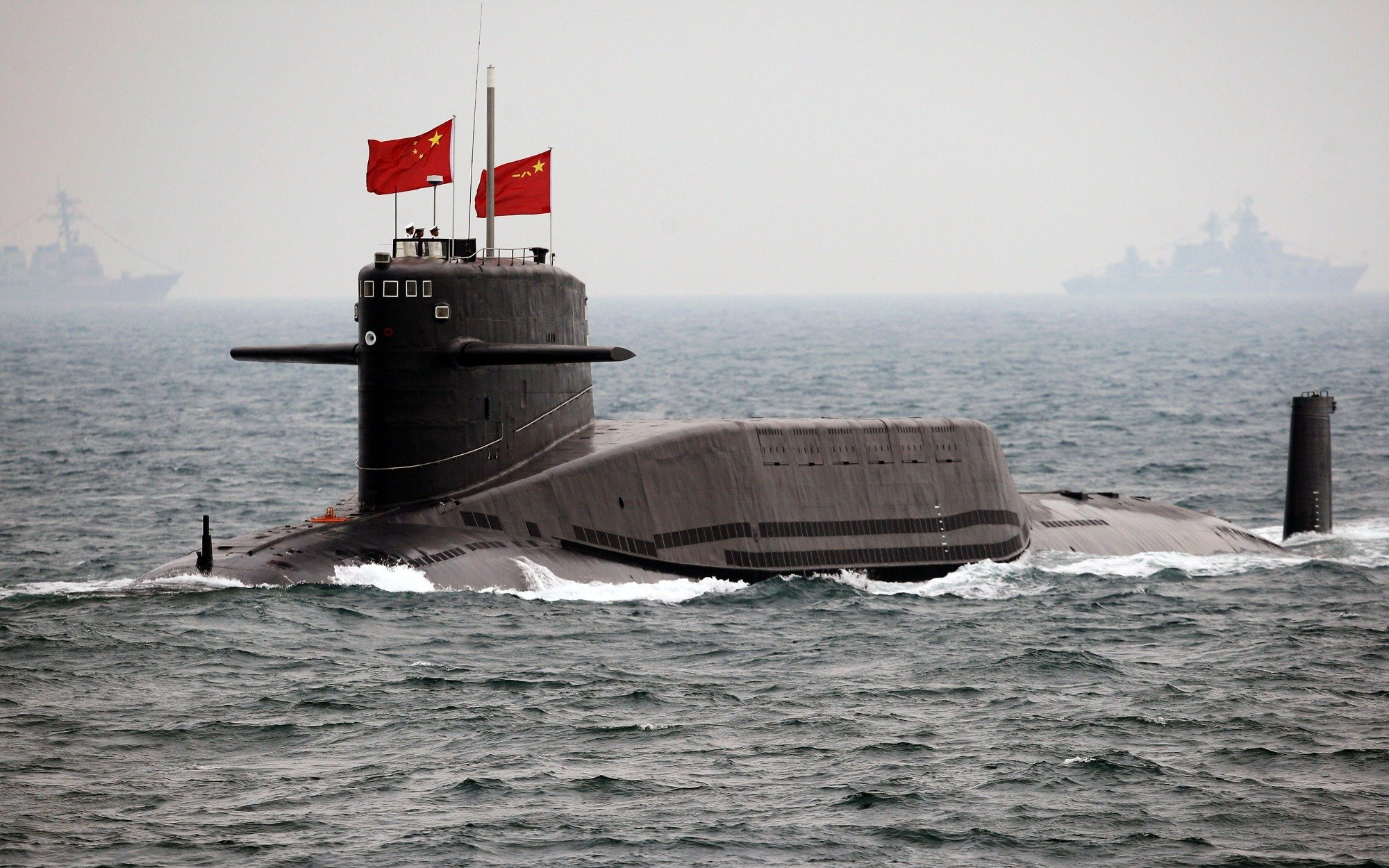China's Submarine Fleet Is Trying to Catch Up to the U.S. Navy
China is rapidly advancing its naval capabilities, particularly with its Shang-class attack submarines, designed to replace the outdated Han-class.
Summary and Key Points: China is rapidly advancing its naval capabilities, particularly with its Shang-class attack submarines, designed to replace the outdated Han-class.

-The Shang-class, featuring advanced sonar systems, anechoic tiles, and YJ-82 anti-ship missiles, is as quiet as the U.S. Navy's Los Angeles-class submarines. With virtually unlimited endurance from its nuclear reactor, the Shang-class is a formidable adversary.
-The U.S. Department of Defense expects more Shang-class submarines, including the Type 093B variant with enhanced missile capabilities, to be built soon. China's industrial efficiency and proximity to potential conflict zones give it a strategic advantage, challenging U.S. naval dominance.
China’s Growing Naval Power: The Shang-Class Submarine Threat
China is the only great power thinking seriously about naval power today. Beijing sits atop the second-largest economy in the world (in GDP terms) and the largest economy in PPP terms. China’s rulers are effectively deploying that vast wealth and technological advancements in Beijing’s bid to become the world’s dominant superpower by the hundredth-year anniversary of the founding of the People’s Republic of China (the year 2049).
As part of the effort, China is building a fleet of advanced submarines that can counter the U.S. Navy’s submarine force.
Paired with China’s industrial efficiency, Beijing has an edge that, if not in terms of quality, certainly surpasses the Americans in terms of quantity. That, as well as the fact that any future engagement between the US Navy and the Chinese Navy would be much closer to Chinese shores, means that China’s growing submarine fleet will have considerable leverage over their American enemies.
The Shang-class attack submarine is China’s second-generation nuclear-powered attack sub. It was designed to replace the aging Han-class attack submarine, which had considerable drawbacks.
The Han-class Sub Informs the Shang-class Submarine
China’s first-generation nuclear-powered attack submarine, the Han-class, was China’s first nuclear-powered submarine ever. Its development was a significant leap in China’s naval abilities.

But the Han-class was a mess compared to its Soviet or American rivals. This boat had a length of approximately 98 meters and a displacement of around 5,100 tons when submerged. The Han class was powered by a single nuclear reactor. She was equipped with six 533 mm bow torpedo tubes capable of launching a variety of anti-submarine and anti-surface vessel torpedoes.
She carried around 75 crewmembers.
The common complaint among China’s submariners was that the Han class was far too noisy. In undersea warfare, stealth and silence are the greatest advantages.
What’s more, the Han-class was about 20 years behind similar U.S. vessels, and its performance was limited by the development level and manufacturing capacity of China’s defense industrial base at the time of its construction.
Some Capabilities…
As for the Shang-class submarine, there are roughly six in service to China. In terms of her capabilities, the Shang-class comes equipped with six 533 mm bow torpedo tubes of similar capability to its Han-class predecessor. Further, the Shang-class can launch YJ-82 anti-ship and land-attack missiles. Meanwhile, the Shang II-class submarine (Type 093B) is equipped with a Vertical Launch System for YJ-18 supersonic and anti-ship missiles as well as variants of the anti-ship CJ-10 cruise missile.
Shang-class attack submarines carry around 100 crewmembers, and their defensive capabilities include advanced sonar systems and anechoic tiles to reduce the submarine’s acoustic signature. The Shang class is considered to be as quiet as the U.S. Navy’s Los Angeles-class attack submarines, with a noise level of around 110 decibels.
Shang-class subs are powered by a nuclear reactor, giving them virtually unlimited endurance and range. The top cruising speed of this boat is estimated to be around 30 knots (or just shy of 35 miles per hour). She displaces around 6,675 tons when submerged for the Type 093/A variant, and 6,700 tons when submerged for the Type 093B variant.
China is planning to build more Shang-class submarines, with the U.S. Department of Defense estimating that China will build the Type 093B guided-missile nuclear attack submarine in the next year or so.
A Fool’s Errand: Underestimating China's Submarines
China continues to catch up to the Americans in key areas. The Shang-class submarine represents one key area where China’s military is moving toward parity with the Americans.
The Shang-class submarine is a real improvement from what came before it. The West is foolish both for underestimating China’s threat and capabilities as well as for assuming that the United States can counter and/or deter China indefinitely.

Author Experience and Expertise: Brandon J. Weichert
Brandon J. Weichert, a National Interest national security analyst, is a former Congressional staffer and geopolitical analyst who is a contributor at The Washington Times, the Asia Times, and The-Pipeline. He is the author of Winning Space: How America Remains a Superpower, Biohacked: China’s Race to Control Life, and The Shadow War: Iran’s Quest for Supremacy. His next book, A Disaster of Our Own Making: How the West Lost Ukraine, is due October 22 from Encounter Books. Weichert can be followed via Twitter @WeTheBrandon.
All images are Creative Commons or Shutterstock.
From the Vault
Russia Freaked Out: Why the U.S. Navy 'Unretired' the Iowa-Class Battleships
Battleship vs. Battlecruiser: Iowa-Class vs. Russia's Kirov-Class (Who Wins?)


